Up Next

“The penalty doesn’t fit the crime” is the plea from Formula 1 drivers as Pierre Gasly edges closer to becoming the first F1 driver to receive a race ban under the penalty point system.
Introduced in 2014 in the wake of Romain Grosjean’s race suspension in 2012 for triggering a multi-car pile-up at the Belgian Grand Prix start, the system has been heavily criticised in recent weeks as Gasly is within two penalty points of the 12 that would automatically trigger a race ban.
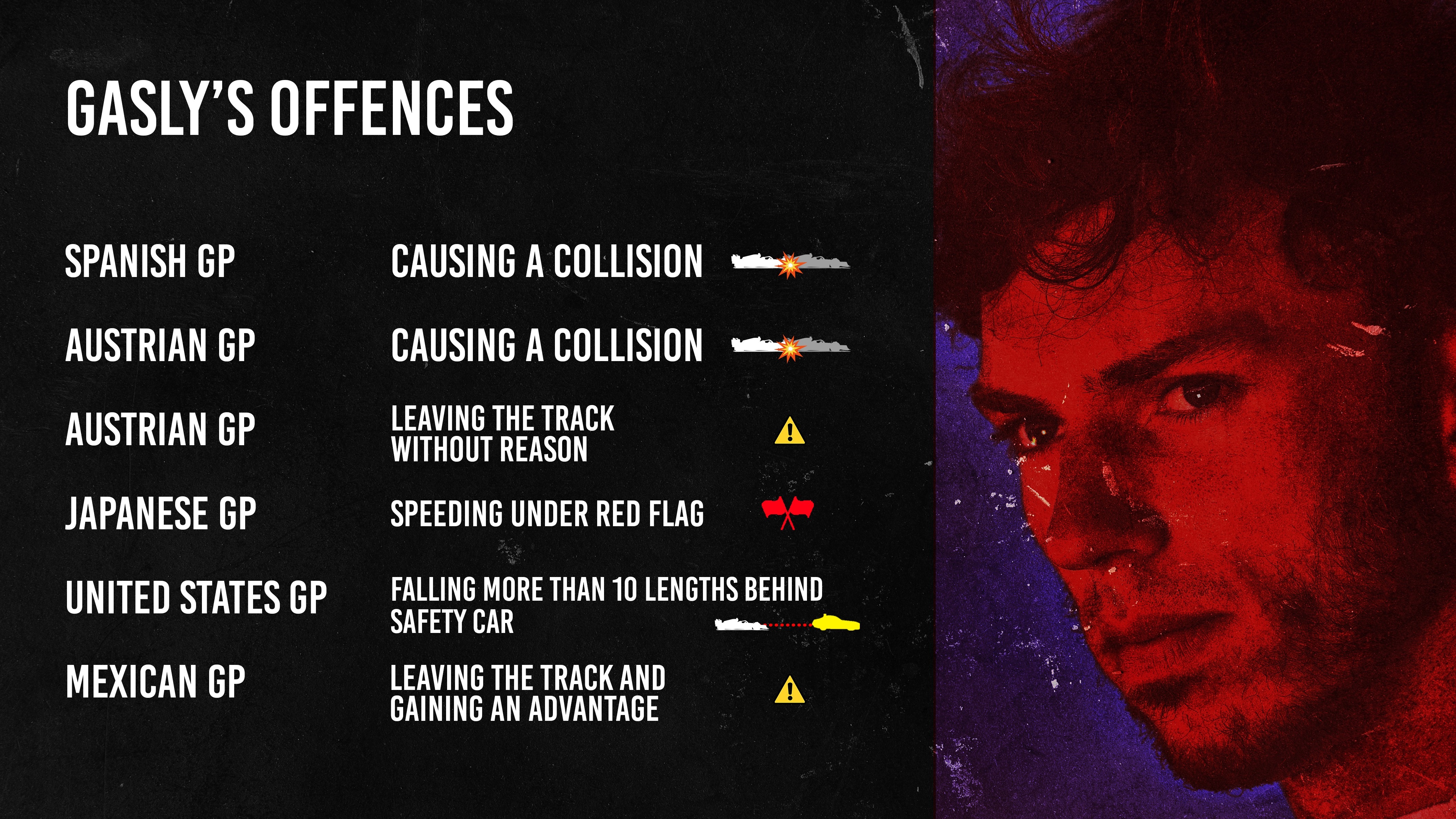
Gasly’s 10 points are a result of a mix of different offences: causing a collision with each Aston Martin driver, falling too far behind the safety car, speeding under the red flag and leaving the track.
Gasly believes he’s facing an “embarrassing” situation that he doesn’t deserve to be in and says he is working with the FIA to help it refine the system for 2023.
He’s received support from many of his F1 peers including Grand Prix Drivers’ Association director George Russell, who spoke in Gasly’s defence on Thursday at Interlagos.
“If anything were to result in a race ban, it needs to be for something particularly dangerous or reckless and I don’t personally associate Pierre as being a reckless or a dangerous driver,” Russell said.
“I hope he gets away with not getting a race ban because he certainly doesn’t deserve one.
“And if somehow he does manage to get 12 penalty points, there needs to be some exemption because the rules aren’t in the right place.”
So is Russell right to suggest the system penalises drivers who haven’t done anything dangerous?
We delved into the reasons behind the 74 penalty points that the FIA has dished out in the past 12 months to work out the offences they’d actually been awarded for.
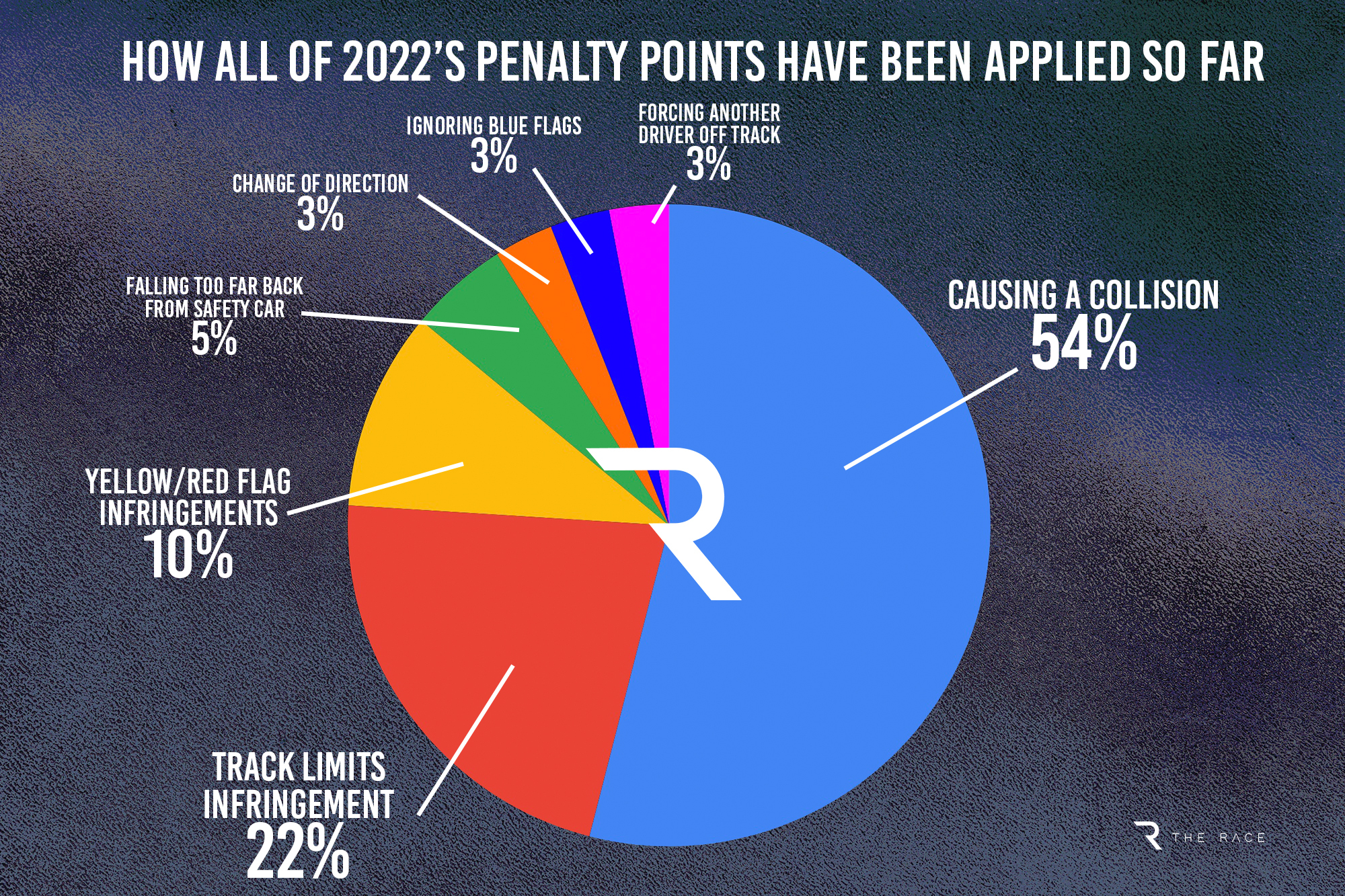
If we group ‘causing a collision’, ‘forcing another driver off track’, speeding under red or yellow flags and an illegal change of direction when defending into a particularly dangerous offences category, we find that 70% of the points distributed have been for a dangerous piece of driving.
The degree of danger varies from case to case but any collision between two F1 cars has the potential to be dangerous, and the driving that caused incidents like Russell wiping out Carlos Sainz at the start at Austin was poor.
It wasn’t intentional nor reckless but if that kind of mistake was made on several occasions it would warrant a race ban – and indeed under the system that kind of driving repeated five further times in the space of 12 months would cause one.
Forcing another driver off track can often be dangerous as it’s often only the other driver’s avoiding action that prevents it from becoming a collision.
Changes of direction can lead to big airborne collisions as Lance Stroll’s late change of direction in defence against Fernando Alonso at Austin proved.
Speeding under yellow or red flag conditions – as Gasly did at Suzuka – can be a danger to both drivers and track marshals and it rightly contributes to a driver’s penalty licence.
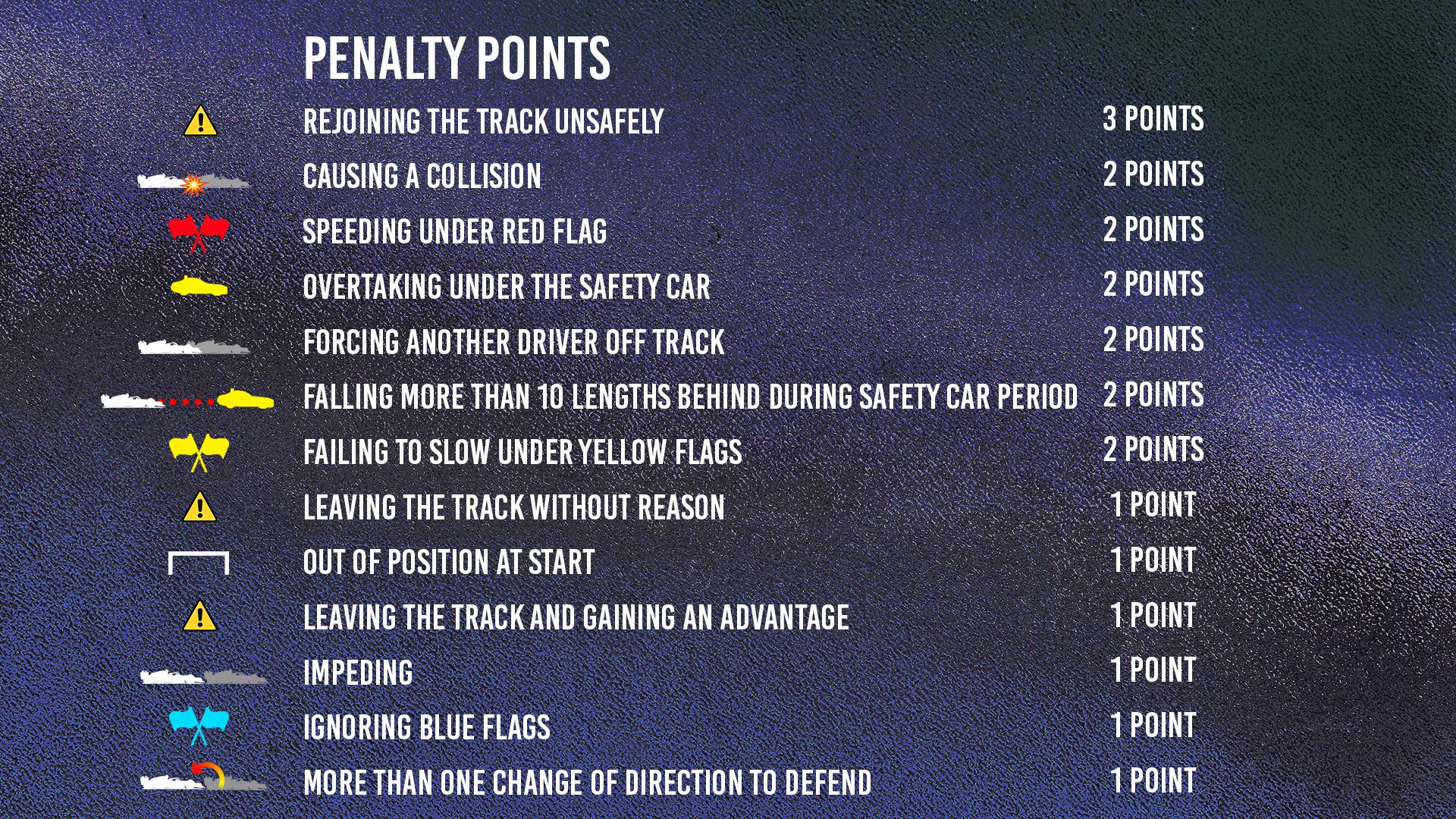
Our tally of ‘dangerous’ offences is based on the FIA’s description of the incidents but in reality, you could add further indiscretions such as Gasly’s ‘leaving the track and gaining an advantage’ in Mexico which was far more like a ‘forcing another driver off the track’ and only not a ‘causing a collision’ because of Stroll’s fast reactions.
Only six of the 16 points handed out for track limits breaches were for leaving the track on multiple occasions in the race without another car being involved.
That leaves the remaining percentage of penalty point-inducing offences as ignoring blue flags, impeding and falling too far behind the safety car alongside the six counts of track limits abuse.
Depending on which of the leaving the track and gaining an advantage over another car penalties you determine to be dangerous, the true figure of how many of the penalty points were earned for dangerous driving could be as high as 82%. So F1’s penalty point system is hardly fundamentally flawed.
And that 82% is not even factoring in the punishment of bad driving like the penalty points earned for impeding, ignoring blue flags and not following safety car procedure.
None of them are without risks – impede at the wrong corner or straight in qualifying and it can be dangerous – but these offences perhaps don’t carry the same alarming danger rate as the red flag or collision penalties.
A sporting penalty is probably enough for those types of transgressions, just like how penalty points aren’t handed out for speeding in the pitlane.
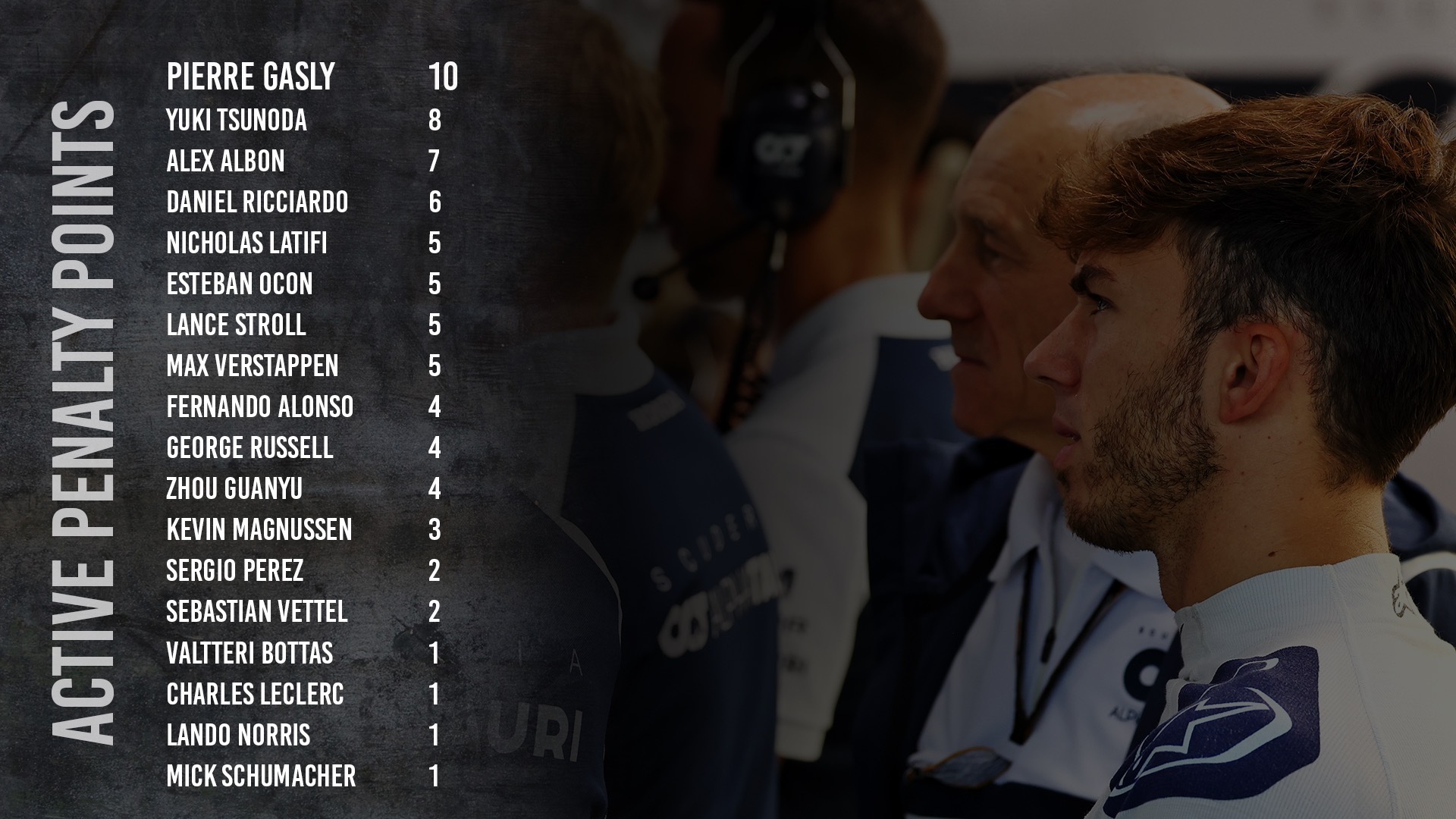
Tweaks to the system are sensible and the obvious place to start would be to stop handing out penalty points for offences like simple track limits abuse.
Without his one penalty point for track limits abuse in Austria and his two for falling too far behind the safety car in the United States, Gasly would be on a far safer seven points.
He would then have to make three further big errors before May 2023 to earn enough points for a ban instead of the one potential collision that would nudge him to the threshold now.
And if that scenario played out it would feel like an earned ban bearing in mind Gasly was probably lucky to only receive two points for his red flag speeding at Suzuka and – with our theoretical three future collisions added – would have caused five separate collisions in the last 12 months.
Russell’s suggestion of an “exemption” is noble but it’s dangerous territory to get into. Set that kind of precedent and what happens if a title contender amasses 12 points and wants an exemption? The backlash doesn’t bear thinking about.
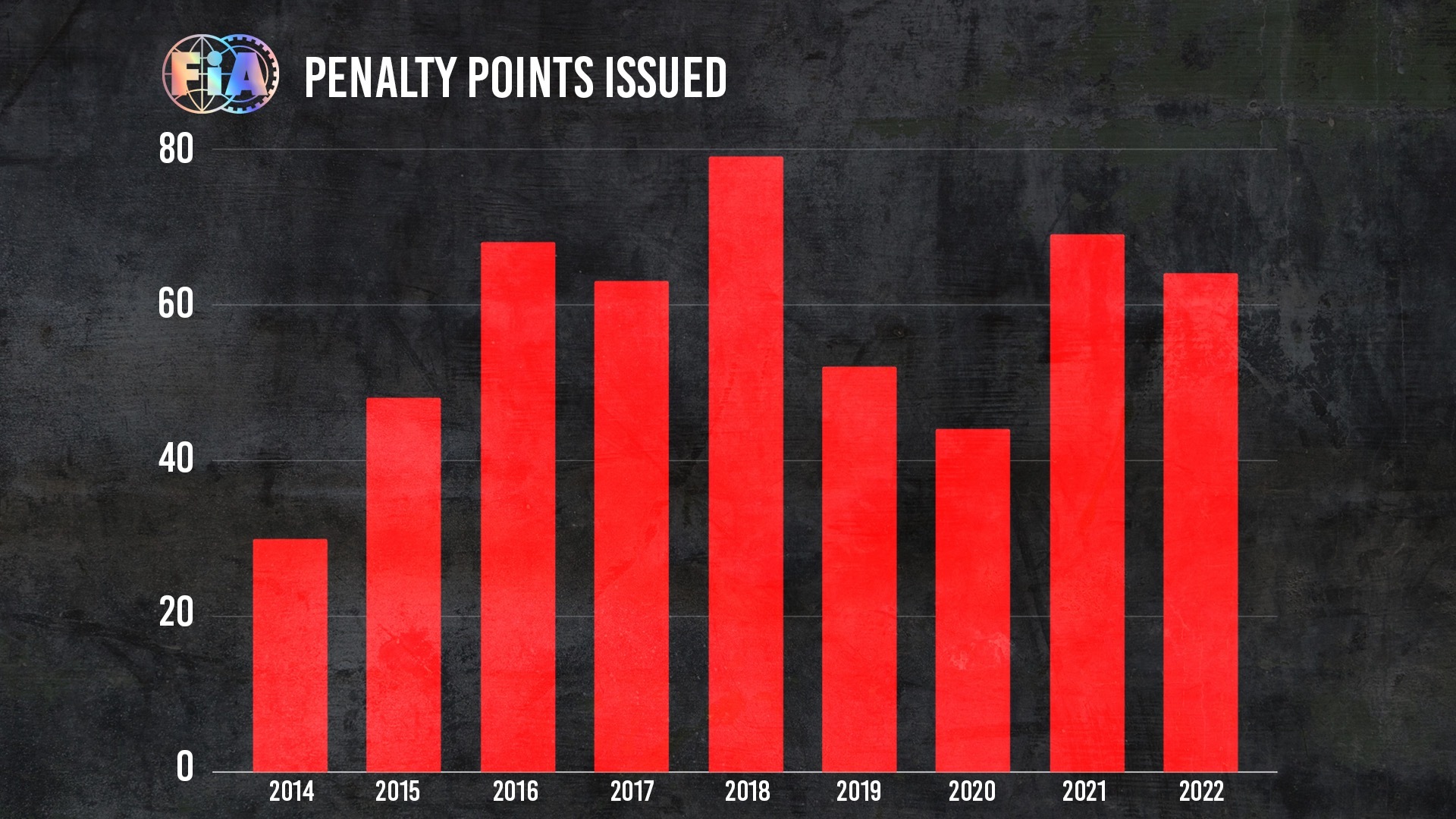
He is right to say that Gasly isn’t a dangerous driver and he’s not deserving of a race ban as it stands but that’s not to say the system doesn’t have the potential to work properly.
It exists for good reason and has arguably worked well in Formula 2 this year to properly punish drivers who have caused too many collisions.
With some tweaks for 2023 and wider stewarding changes as a whole, F1 can have a robust licence system that will only ban drivers who essentially commit six ‘dangerous’ offences (two penalty points for each) such as causing a collision or speeding under yellows – both of which are errors that put people at risk.
Should a driver cause a more serious collision, trigger a multi-car pile-up or speed under a red flag, more than two penalty points should be handed out – and this should be quantified in the regulations – but committing six of the ‘medium danger’ offences like causing a collision as Gasly has done twice this year feels like the right kind of level for a ban.
So perhaps the potential penalty won’t fit all of Gasly’s ‘crimes’, but a tweaked future system really should fit most of them if they’re repeated enough.




